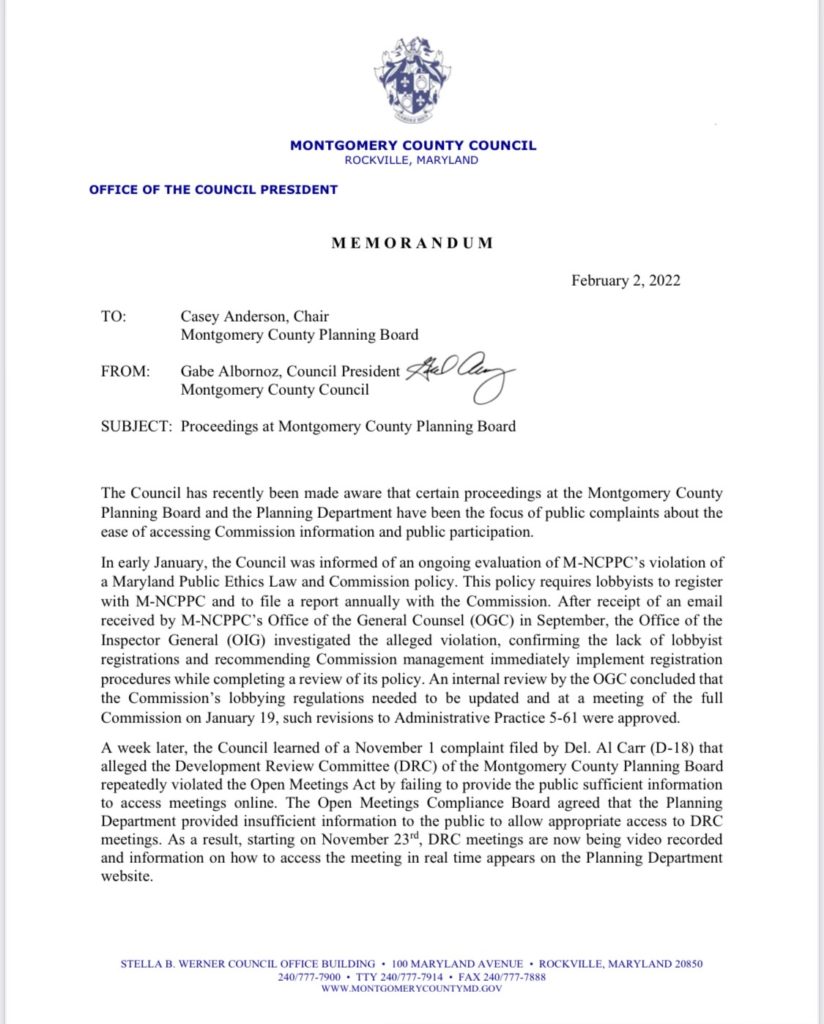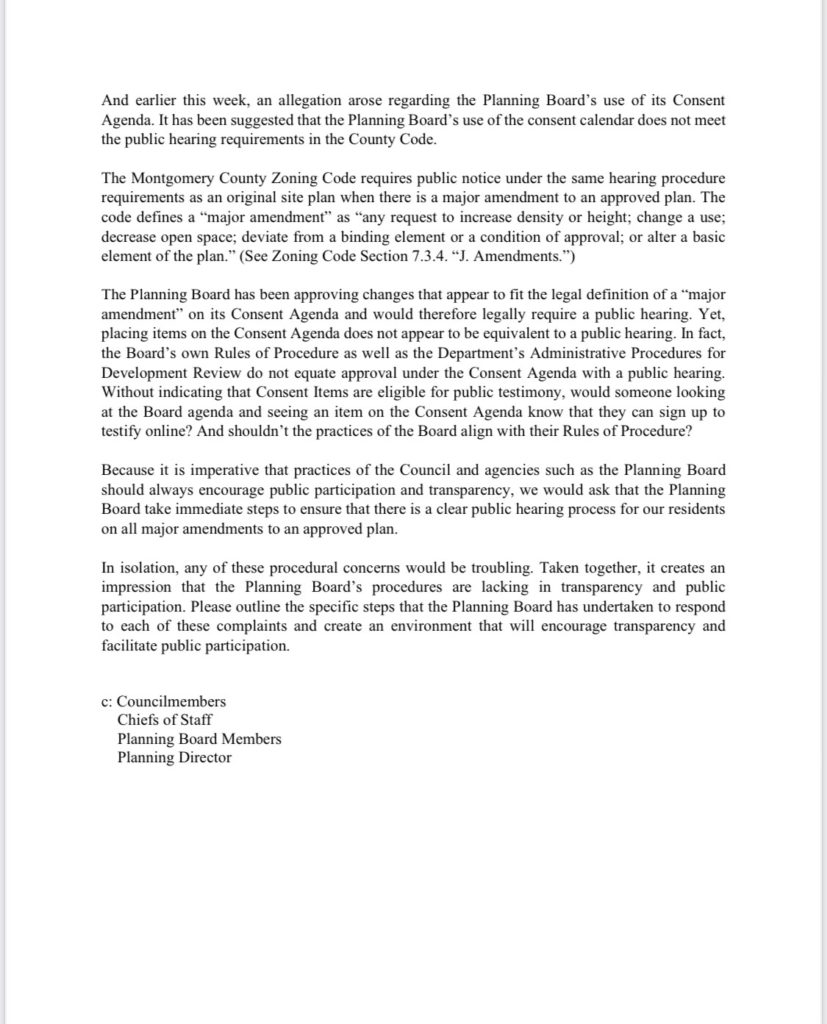Thrive 2050 has many words about equity. So why didn’t the Office of Legislative Oversight’s (OLO) racial equity and social justice (RESJ) review end up giving it a gold star?
Thrive’s staunchest advocates still can’t believe it. Yesterday’s post outlined how they utterly reject the claims made in the RESJ review. Planning Board Chair Casey Anderson and Planning Department Director Gwen Wright doubled down on their assertations that Thrive addressed RESJ extremely well in their lengthy response.
But it turns out that these problems with Thrive were not a February surprise but were flagged last August in a memo to Councilmember Hans Riemer by the Office of Racial Equity and Social Justice (ORESJ), an executive agency. Riemer chairs the Planning, Housing and Economic Development (PHED) Committee which was in the midst of work sessions on Thrive. So what happened? Where did Thrive go awry?
Both the Council and the Executive have offices to do RESJ analyses. How does the Planning Department do the same? Planning staff in June 2020 outlined an action plan to incorporate RESJ into Master and Functional Plans that was approved by the Planning Board.
But, as far as I can tell, Planning did not follow either the Council or the Executive’s model and identify a staffer or establish an office with the requisite skills. Planning’s website highlights their equity plans going forward, including for Thrive 2050 (emphasis added):
Montgomery Planning is developing an Equity Agenda for Planning to systemically dismantle the institutional racism that exists in our work and prevent it in the future. Developing an Equity Agenda for Planning is ongoing and will require constant attention to the influence of institutional racism on all planning and zoning processes. We’ve begun working on this through some recent master plans and studies and through Thrive Montgomery 2050, the update to the county’s General Plan. . . .
It will take some time to fully develop a new methodology and approach for equity in the planning process, but we cannot delay applying an equity lens to our work.
But nearly two years after approving the action plan, there is no formalized framework, mechanism or staff to ensure that both outreach and Thrive were done in line with intentional RESJ practices. Nor is there evidence that Planning reached out to OLO or ORESJ for their expertise despite the warning back in August.
Instead, the Planning Board has relied on its own interpretation of what constituted an “equity lens”. There was no separate in-house or independent analysis along the lines of what either the Council or the Executive requires.
Many words about equity does not mean that the process was inclusive or that the substance meaningfully addresses the issue. While Anderson and Wright vehemently defend their work product, they would be in a better position to do so if they had such an analysis. Instead of deciding that they know what constitutes equity, they would have an informed and impartial analysis to buttress their claims that they had done this the right way and addressed all RESJ issues.
In short, this appears to have been handled sloppily, much like the Planning Board’s repeated ethics problems. As I explained yesterday, I think that at least part of this stems from a firm urbanist belief that their ideas will assure racial and economic equity. This makes it all too easy for the Planning Board to misguidedly define their own preferences as “equity”.
But hewing to a particular school of thought and relying on one’s own judgment of what constitutes equity is not the same as genuine outreach to people in the community, let alone communities of color and low-income residents, or incorporation of their ideas and desires into the plan.
That Thrive reflects the nexus of suppositions by Anderson, Wright, Riemer—all very successful Whites—and outside support groups like the Coalition for Smarter Growth—whatever their intentions—so perfectly indicates that the process and the result were more performative than inclusive.
Many may question the entire enterprise of RESJ reports and such an intense focus on issues related to it. But the centrality of claims regarding equity to arguments made by Thrive’s advocates only make Planning’s failure more stunning and acute.


